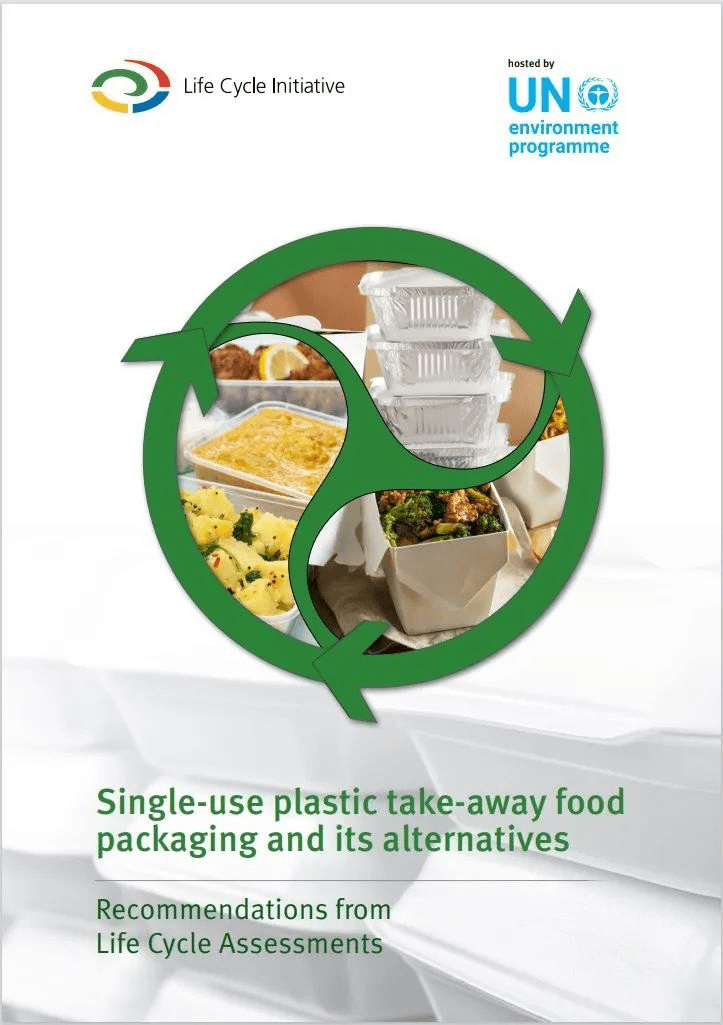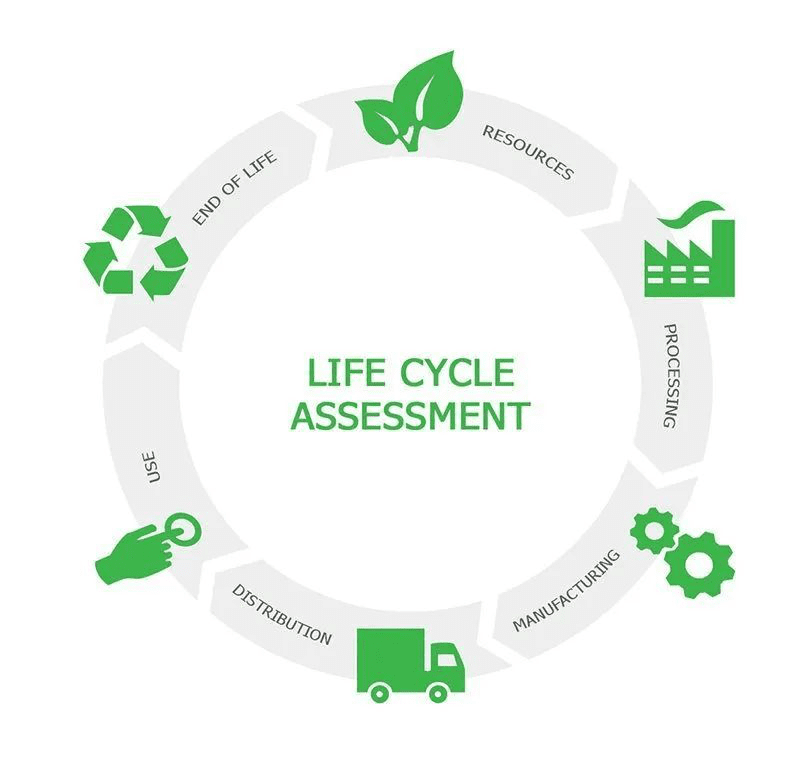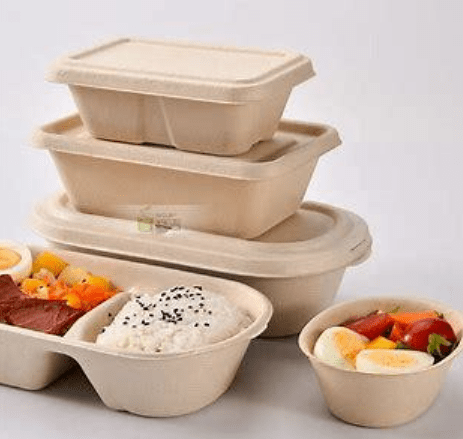In modern society, disposable plastic products have been widely used, such as: straws, tableware and shopping bags, etc.. For these commonly used disposable consumer products, people often use them up and throw them away, few of them are recycled, and most of them become garbage. The United Nations Environment Programme estimates that about 100 million to 150 million tons of single-use plastics are produced globally each year, of which about 8 million tons are eventually dumped into the ocean.
Today, take-out food consumption is on the rise, and the large amount of single-use plastic waste poses a serious burden on the environment. In response, the United Nations Environment Assembly has encouraged Member States to develop environmentally friendly alternatives to single-use plastic products and to conduct life cycle assessments of alternatives to quantify potential environmental impacts. Recently, the latest UN report, "Single-Use Plastic Take-Out Food Packaging and its Alternatives - Recommendations from a Life Cycle Assessment," was produced.

Life cycle assessment (LCA) refers to the quantification of potential impacts (e.g., climate change, acidification, eutrophication, etc.) on a global or regional scale with a systems perspective, and specifically refers to the assessment of the potential environmental impacts of various environmentally related inputs and outputs and product life cycles. Environmental inputs and outputs refer to the demand for natural resources, emissions and solid waste. The life cycle includes the extraction of raw materials, production, use, subsequent management or recycling and transportation processes between the various stages.

Based on a review and analysis of LCA research, this report aims to analyze and compare the environmental impacts of single-use plastic products and their alternatives to provide insights for LCA practitioners, policy makers and the general public. The take-out food referred to in the study was defined as a fast food type, and the dining venue was not a fast food restaurant, but rather a place such as a home or workplace. The packaging alternatives evaluated included mainly disposable packaging and reusable alternatives, which also needed to ensure proper storage and transportation of take-out.
Due to the length of the article, this paper discusses the environmental impact of various types of take-out packaging based on the following seven dimensions.
1. Number of uses. Studies have shown that reusable plastic packaging is more environmentally friendly than disposable plastic packaging when it is reused a sufficient number of times. For example, studies by several scholars have shown that reusable plastic packaging possesses better environmental performance than disposable PS containers or disposable wood packaging (Baumann et al. (2018); Accorsi et al. (2013)). In addition, the importance of a well-developed system and an efficient way of transportation for reuse, as well as for the environment, has also been emphasized.
2. Packaging function. Many factors affect the match between the type of food and the type of packaging, such as how much it can hold, how much it can transport, whether it can hold hot and / or fluid food, whether it can prevent waste spoilage, etc. For example, a carton, without proper coating segregation, may be less suitable for shipping foods dipped in liquid sauces. Moreover, a more critical environmental parameter than the raw materials of the packaging and the way it is ultimately recycled is the degree to which the packaging retains its freshness, a conclusion that has been supported by a large body of literature. The food inside the package usually has a greater impact on the environment than the package itself.
3. Package weight. Generally speaking, the lighter each unit of packaging is, the better its environmental performance when the function is the same. For example, when using three disposable plastic materials (PLA, PET, PS) for strawberries in flip-top containers, the environmental benefits are better because the polystyrene (PS) packaging material is lighter. For example, in daily life, there are six different types of disposable plastic commonly used in the packaging of fruits and vegetables, namely: XPS, OPS, PET, RPET, PLA (corn), PP. in these six types of packaging, extruded polystyrene (XPS) take-out food packaging low weight, less impact on the environment. Moreover, in the case of long-distance transportation, the packaging is lightweight and often beneficial to the environment. However, XPS products are too light, easy to be blown away by the wind, and eventually become garbage, and, XPS packaging recycling requires high costs, the current recycling system is not perfect, resulting in most of this type of packaging can only be landfilled or incinerated.
4. Packaging materials. Different materials have different environmental impacts. Comparing disposable take-out packaging of different materials, several studies have shown that PS, XPS and paper packaging tend to have better environmental performance than packaging alternatives of other materials (PET, PLA, PP, aluminum). To break it down, in terms of comparing fossil-based alternatives to paper products, the latter's benefits outweigh the former's in terms of being made into food trays. Paper-based disposable food packaging is more environmentally friendly in several impact categories such as climate change, acidification, eutrophication, and photochemical ozone production (Johansson et al. 2019). While comparing PET, PLA and PP, by analyzing three categories of disposable take-out food packaging made from these three alternatives, scholars found that PLA packaging has a lower environmental impact. Another study showed that polypropylene (PP) containers have a lower environmental impact than glass containers when all are reusable.

5. Production routes and resources used. Take-out food packaging may look the same, but the production routes and resources used may be different and may have different environmental impacts. For example, when producing single-use plastic packaging, there are two sources, either fossil or bio-based (corn, tapioca, forest residues, etc.) resources, or primary or secondary (e.g., recycled) resources. The maturity of the production route also has an impact on the environment. Fossil-based plastics are more mature for packaging production; however, bio-based plastic packaging has not yet been produced economically on a large scale, is produced on a small scale, and is less mature overall, but has high potential for development and will have a positive impact on the environment.
6. Recycling governance. How biodegradable materials such as disposable paper packaging are disposed of in the final stage is important compared to disposable plastic packaging; whether they are recycled, incinerated, or landfilled affects the priority level of such materials. When industrial composting or anaerobic digestion is in place, the use of biodegradable packaging can show good environmental benefits. However, in countries where landfills are widely used, disposable paper packaging is still less suitable than disposable plastic packaging, despite its high environmental benefits. This is because studies have shown that the eventual biodegradation of biodegradable packaging in landfills produces methane. If the landfill's methane capture rate is not high, but rather low, it can contribute to the magnitude of global warming. This leads to the crucial seventh point - site-specific adaptation.
7. Adapt to the location. Geography varies and many factors change with it. From the raw materials used in the production of bio-based plastics to the final waste management system and how it is disposed of, geography influences all aspects of the process. In addition, the overall geography shapes consumer behavior in each region, the related infrastructure, the technology for low-carbon power generation, and many other things. As the saying goes, your honey is your arsenic, and the environmentally friendly packaging material suitable for location A may not be the best choice for location B. Everything should be based on the actual situation.
In addition to summarizing environmental knowledge and building an assessment framework for the average consumer, the report concludes with practical recommendations for policy makers and LCA practitioners.
For policy makers, the introduction of relevant takeaway food packaging policies should be based on the system.
On the one hand, policy makers should focus on the present, with policies adapted to the geographic context, paying attention to local production of bio-based feedstocks, technical equipment and relevant consumer behaviour, taking into account the differences between materials, including differences in functionality and production routes.
On the other hand, policy makers should be proactive and clarify the potential impact of existing packaging solutions.
In addition, LCA analysis is not exhaustive, and this tool rarely covers knowledge on food safety, ecological impacts of land and sea waste, and so on. Therefore, policy makers should also get information from multiple sources to formulate policies scientifically.
For LCA practitioners, in order to attenuate the adverse effects of take-out food packaging on the environment, in addition to considering the peculiarities of the geographical environment and the differences among packaging materials, they should especially do a good job of data collection during the production and modeling process. In the subsequent LCA analysis, more consideration should also be given to the maturity and scale of the technology, and more exploration of non-degradable packaging materials to enrich the research results.

